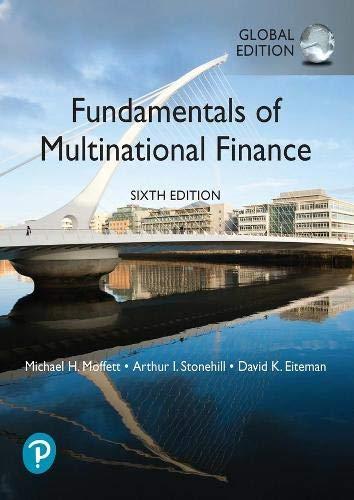Question
Assignment Exercise 15-1: Budgeting Select an organization: either from the Case Studies in Chapters 27-28 or from one of the Mini-Case Studies in Chapters 29-31.
Assignment Exercise 15-1: Budgeting
Select an organization: either from the Case Studies in Chapters 27-28 or from one of the Mini-Case Studies in Chapters 29-31.
Required
1. Using the organization selected, create a budget for the next fiscal year. Set out the details of all assumptions you needed in order to build this budget.
2. Use the "Checklist for Building a Budget" (Exhibit 15-2) and critique your own budget.
Exhibit 15-2 Checklist for Building a Budget
| 1. What is the proposed volume for the new budget period? 2. What is the appropriate inflow (revenues) and outflow (cost of services delivered) relationship? 3. What will the appropriate dollar cost be? (Note: this question requires a series of assumptions about the nature of the operation for the new budget period.) 3a. Forecast service-related workload. 3b. Forecast non-service-related workload. 3c. Forecast special project workload if applicable. 3d. Coordinate assumptions for proportionate share of interdepartmental projects. 4. Will additional resources be available? 5. Will this budget accomplish the appropriate managerial objectives for the organization? Writing this budget one can assume that a new proposed budget for the new period would be 500,000 with the inflow of 250,000 and outflow of 30,000. The cost of the dollar amount would be 50.00. Forecasting a workload of 20,000 and a non-service related workload of 10,000 one could assume that a cost of 30,000 would be deducted from the inflow of the receivable amounts for the next year. Assuming that the share of interdepartmental projects is at 50,000. Additional resources will be available. The budget proposed will be the objective for the organization. Assignment Exercise 15-2: Budgeting Find an existing budget from a published source. Detail should be extensive enough to present a challenge. Required 1. Using the existing budget, create a new budget for the next fiscal year. Set out the details of all the assumptions you needed in order to build this budget. 2. Use the "Checklist for Building a Budget" (Exhibit 15-2) and critique your own effort. 3. Use the "Checklist for Reviewing a Budget" (Exhibit 15-3) and critique the existing budget. Assignment Exercise 153: Transactions Outside the Operating Budget Review Figure 152 and the accompanying text. Metropolis Health System (MHS) has received a wellness grant from the charitable arm of an area electronics company. The grant will run for 24 months, beginning at the first of the next fiscal year. Two therapists and two registered nurses will each be spending half of their time working on the wellness grant. All four individuals are full-time employees of MHS. The electronics company has only recently begun to operate the charitable organization that awarded the grant. While they have gained all the legal approvals necessary, they have not yet provided the manuals and instructions for grant transactions that MHS usually receives when grants are awarded. Consequently, guidance about separate accounting is not yet forthcoming from the grantor. Required How would you handle this issue on the MHS operating budget for next year? Exhibit 152 Checklist for Building a Budget 1.What is the proposed volume for the new budget period? 2.What is the appropriate inflow (revenues) and outflow (cost of services delivered) relationship? 3.What will the appropriate dollar cost be?(Note: this question requires a series of assumptions about the nature of the operation for the new budget period.) 3a.Forecast service-related workload. 3b.Forecast non-service-related workload. 3c.Forecast special project workload if applicable. 3d.Coordinate assumptions for proportionate share of interdepartmental projects. 4.Will additional resources be available? 5.Will this budget accomplish the appropriate managerial objectives for the organization? Exhibit 153 Checklist for Reviewing a Budget 1.Is this budget static (not adjusted for volume) or flexible (adjusted for volume during the year)? 2.Are the figures designated as fixed or variable? 3.Is the budget for a defined unit of authority? 4.Are the line items within the budget all expenses (and revenues, if applicable) that are controllable by the manager? 5.Is the format of the budget comparable with that of previous periods so that several reports over time can be compared if so desired? 6.Are actual and budget for the same period? 7.Are the figures annualized? 8.Test one line-item calculation. Is the math for the dollar difference computed correctly? Is the percentage properly computed based on a percentage of the budget figure? INFORMATION CHECKPOINT What is needed? Example of variance analysis performed on a budget. Where is it found? Probably with the supervisor who is responsible for the budget. How is it used? To see what type of budget it is and to see how it is constructed. |
Step by Step Solution
There are 3 Steps involved in it
Step: 1

Get Instant Access to Expert-Tailored Solutions
See step-by-step solutions with expert insights and AI powered tools for academic success
Step: 2

Step: 3

Ace Your Homework with AI
Get the answers you need in no time with our AI-driven, step-by-step assistance
Get Started


